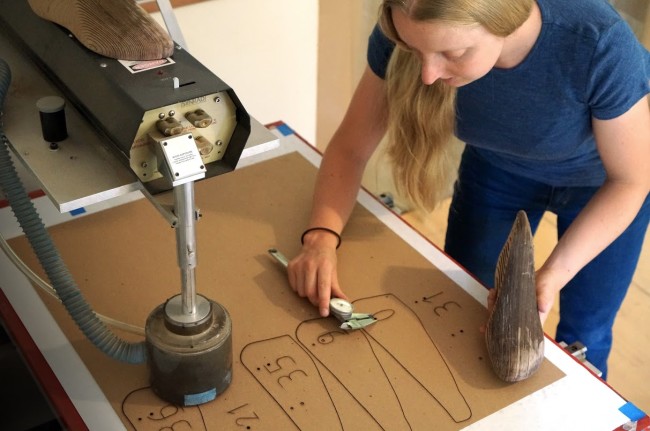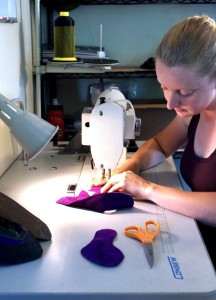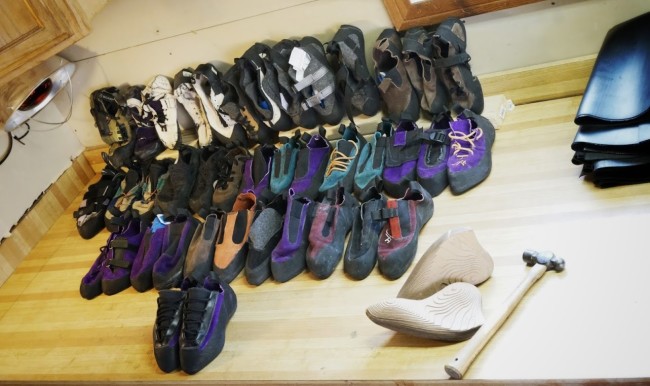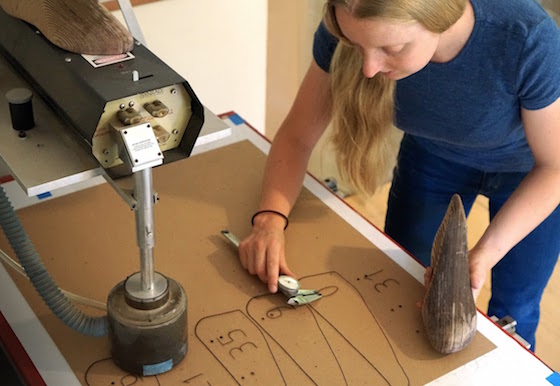
For $350 you too can have a pair of custom climbing shoes made by a 25 year old MIT graduate, and they just might be the most comfortable shoes you’ll ever climb in. At least that’s what Laura Shumaker has been working towards with her company SFT Climbing.
The aptly named Shumaker is the Founder and Lead Designer for SFT Climbing, a custom shoe manufacturer based Sebastopol, California. By combining time honed craftsmanship with Silicon Valley tech savvy, Shumaker is attempting to bring a hybrid-designed climbing shoe to market. In the future she may end up disrupting the old guard of shoe design, but for now Shumaker just wants to make a quality product.
How To Become a Cobbler
After graduating from MIT with a Mechanical Engineering degree with an emphasis on product design, Shumaker took a job as a design consultant but knew she wanted more freedom to explore the products that she was interested in.
“I’ve always wanted to develop my own products,” Shumaker told CBJ in a phone interview. “To have that kind of freedom to take something I really care about, and make it a reality.”

Being mostly a boulderer, Shumaker knew about the discomfort of wearing cramped climbing shoes for a whole session and she told us, “that just seemed kinda stupid.” She said about the current climbing shoe design, “I’m not saying the state of the art is stupid, but that was the state of the art 5 to 10 years ago.”
And she is mostly right. There has not been much innovation in the climbing shoe market. Materials have been added like synthetic uppers but the rubber of today is eerily similar to the rubber of 20 years ago. Though the fit of climbing shoes went through a brief change when La Sportiva introduced the Slingshot rand and the Powerhinge to their high-end Solution climbing shoe, fit design seems to be in stasis.
“As shoe manufacturers, we’re all very lucky in that climbers are willing to put themselves through a lot of pain,” Shumaker said. “But we’ve reached a point where we don’t have to do that anymore.” By that she means there are technological advances that could be used to better advantage if manufacturers were willing to look for them.
That’s where the idea for an adjustable climbing shoe popped into her head, “A shoe that can go from downturned to relaxed and back,” she said. To do this, or to make any kind of shoe, the craftsperson first needs to build a “last” which the shoe is then built around. Shumaker designed a CAD model of her adjustable last and started the long process of learning how biomechanics effect the shoe design.
After a few prototypes the small SFT team quickly learned that with the right customization and fit a climber’s comfort level goes way up even without on-the-fly adjustment. “90% of the discomfort we were trying to address by adjusting our shoes just went away when you had shoes that were properly fitted,” Shumaker said.
SFT has completed 50 prototypes and recently finished their beta testing. Even though the adjustment system still needs more design work, Shumaker feels they have finally arrived at a point where it’s possible to take her last and unique digital manufacturing system to the public. “We’ve gotten really good feedback on the custom shoe so we decided to make that our first product,” Shumaker said.

Funding
Shumaker, like any good entrepreneur, knew she needed funding if her shoes were ever going to see the light of day. That’s where Upstart, an online lending platform run by former Google data scientists, came into the picture.
In 2012 when Shumaker conceived of SFT, Upstart operated a bit differently than it does now. Entrepreneurs would go in front of a group of potential investors and pitch either their idea and ask for seed funding. The investors wouldn’t so much invest in the product or company, per se, but rather the person behind the company. If the investors like the idea or found the person worthy they would invest a sum of money in exchange for a percentage of the entrepreneur’s future income, regardless of where the income came from.
With Shumaker’s education and experience she was a sure bet for investors and easily picked up the necessary cash to get SFT off the ground.
Business Insider profiled Upstart in June 2015.
Upstart was founded in 2012 with the idea of connecting young entrepreneurs with investors. But last year, it pivoted to the current online-lending platform after realizing its future-looking analytics would be better used in the personal-loan market.“What [Upstart] has done here is identifying ‘future prime borrowers,’” Girouard told Business Insider. “Our modeling is really focused on not what you did in the past, but what’s likely to happen to you in the future. These are people that are going to be doing great things, earning a lot of money, becoming wealth creators over time.”
The Process
SFT shoes fall in the middle of the climbing shoe distribution model. You cannot buy them off the shelf like most climbing shoes. But they aren’t quite 100% custom-made in the traditional way, which involves a customer going into the shop and having their feet cast so a craftsperson can hand-make a pair of shoes that fits the buyer’s feet exactly. This custom process can take up to a month to complete and costs over $500 a pair.
SFT’s manufacturing process combines the ease of the Internet, some old school paper and some standard manufacturing technology to create a streamlined custom manufacturing process. This allows the customer to order a pair of shoes from the comfort of their home laptop and receive them by mail two weeks later.
The process begins with a customer tracing the outlines of their feet on an 8.5 x 11 sheet of white paper and scanning or taking a picture of the outline. Next, the customer takes two photos of the sides of their feet and sends all that over to the SFT team.
SFT converts the pictures into measurements for the customer’s foot (based on the size of the paper) and feeds that information into a software program that scales and transforms the data into a 3D model. Those measurements are then put into the CAD model where the suede and rubber are scaled, laser cut and then hand assembled.
This process results in a climbing shoe that is built around the contours of an individual’s foot and has the performance enhancing benefits of a custom shoe, without the cost and time of getting custom shoes made in the traditional way.
The process isn’t perfect for all climbers, particularly people that need shoes with specific support for medical conditions or for people with unusual feet. Even though SFT gets the exact measurements of the feet to be shod, the software makes certain assumptions about the customer’s foot. “It assumes your feet look like feet,” she said. “For example if you’re missing toes my last won’t adapt to that. It would leave space at the end of your shoe where your toes are missing.” Shumaker says these customers should seek out a traditional craftsperson to make their shoes.
Mass Customization
Shumaker has no plans to compete directly with the big players like Five Ten and La Sportiva, which mass produce their shoes for a broad market audience. She instead likes to think of SFT as providing “mass customization”. For climbers who have reasonably normal feet but are sick of the lack of proper fit and comfort, Shumaker said, “I’m there for those people.”
SFT, which informally stands for “So Fucking Tight”, or “if you’re talking to your Grandma, Shoes For Technique,” Shumaker joked, is just beginning to get into the highly competitive climbing shoe market. Shumaker says she will continue to innovate and bring in new techniques that create efficiencies and cut waste.
“Our first goal is to completely digitize every step of the manufacturing chain,” she said. “And then to look at the steps again and say, where can we combine one… or maybe 3D printing can do multiple materials much more efficiently.” Though she cautions, “It’s been this long held promise that you could 3D print a pair of shoes, but from an engineering and biomechanics perspective…it’s not very functional.”
The SFT team is very small, with Shumaker doing most of the heavy lifting including R & D, design, assembly and company operations. But Shumaker wouldn’t have it any other way. “I’ve fallen in love with the process of boot-strapping a company. I like how it helps me think about the company’s priorities…about what kind of R & D to invest in,” she said. “I feel like I’m learning a lot more as a business person than if I had taken a load of investing in the first round. I’m really happy with what we’ve been able to do with the minimal funding we have.”

Climbing Business Journal is an independent news outlet dedicated to covering the indoor climbing industry. Here you will find the latest coverage of climbing industry news, gym developments, industry best practices, risk management, climbing competitions, youth coaching and routesetting. Have an article idea? CBJ loves to hear from readers like you!







